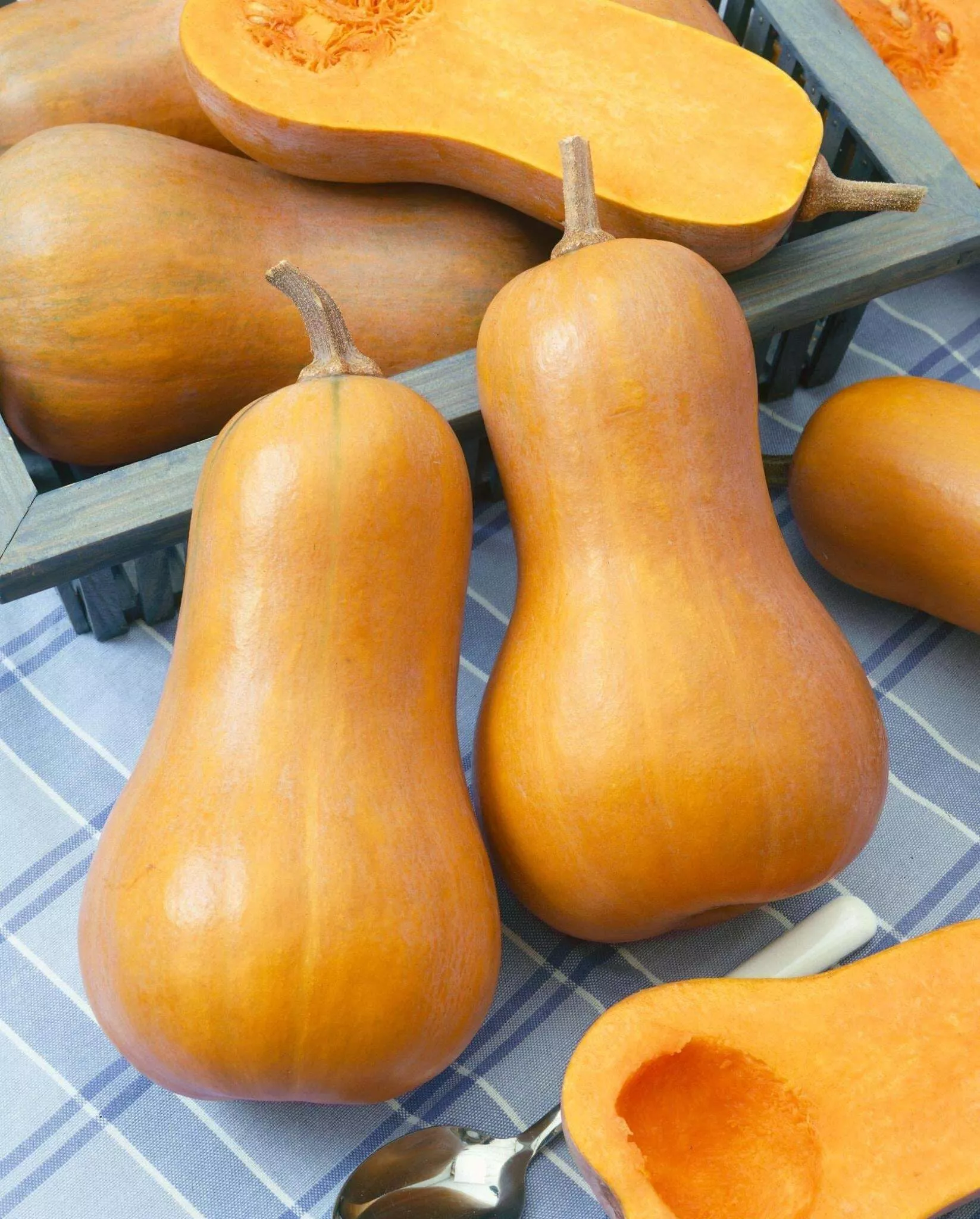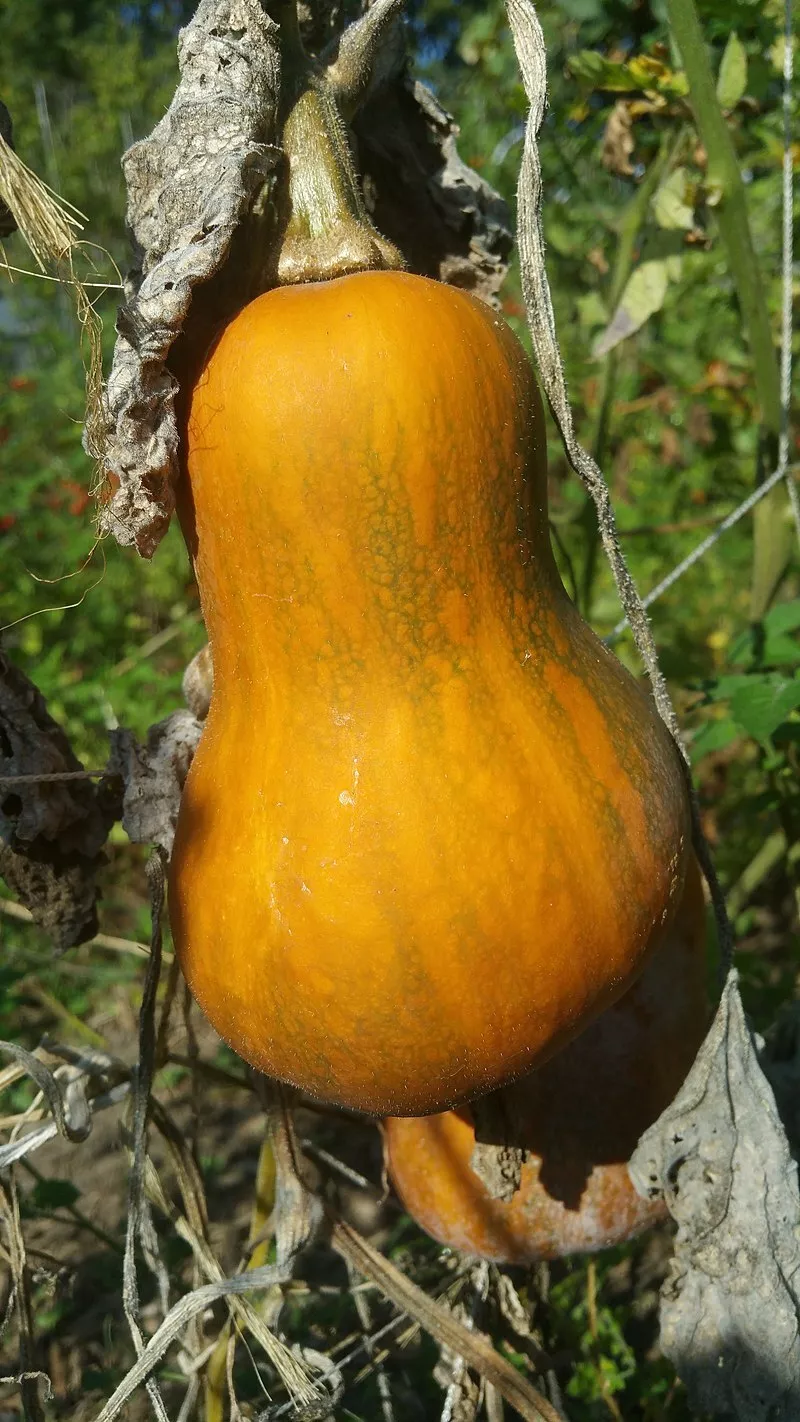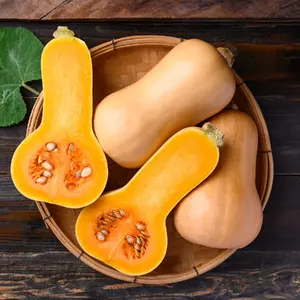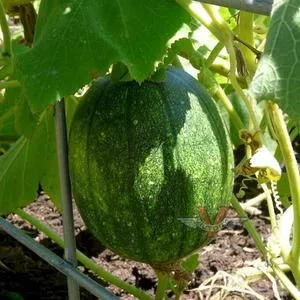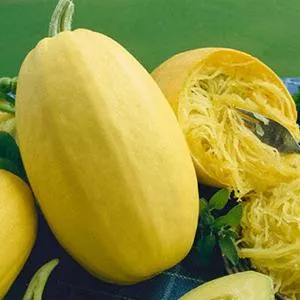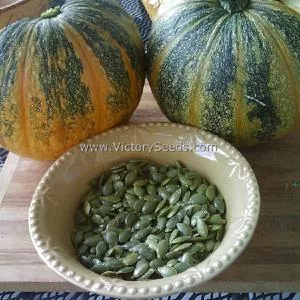

Honeynut Winter Squash
Price: $4.45
SKU: 3319971This trendy new open-pollinated butternut-type winter squash is one you may have seen in your local high-end grocery store. A vegetable breeder at Cornell, Michael Mazourek, was challenged by chef Dan Barber to create a small butternut that tasted good, and Honeynut is the result.
Created as an interspecies cross between butternuts (C. moschata) and buttercups (C. maxima), this interesting cultivar has good levels of resistance to powdery mildew and produces 4-5" miniature butternuts with dark, extra healthy flesh, with much higher levels of beta carotene and Vitamin A than other squashes. The fruit remains green all the way until ripening to orange in the last couple weeks.
National Gardening Association member Dill Haley says, "There are now many competitive small butternuts on the market, but this one is still the king of flavor."
Sow five to six seeds, one inch deep, in hills or rows. Spacing is dependent on plant type. Vining varieties should be spaced on six foot centers while bush-types at twenty-four to thirty inches apart. When seeds germinate, cut off all but the strongest three or four seedlings.
When laying out your garden, remember to consider the growing habits of the varieties that you are planting. Some bush-types are compact while some vining types require a tremendous amount of space. Harvest time will also vary by type.
Customer Reviews:
By charles hack (central pa.) on November 4, 2024
these little squash grew like crazy got a abundance of squash they were delicious baked them with butter and brown sugar in the seed cavity

